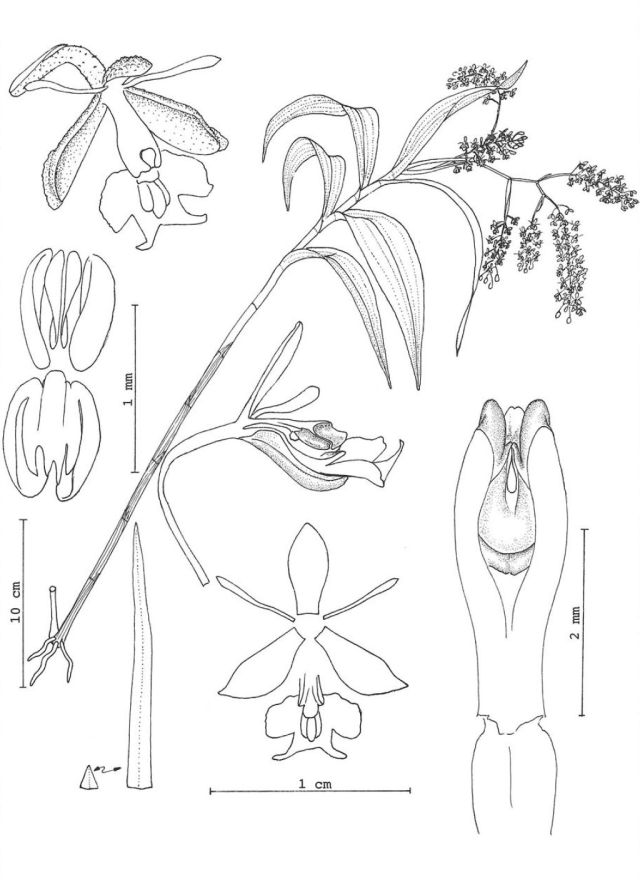

Epidendrum longibracteatum Hágsater 1999 GROUP Pseudepidendrum SUBGROUP Paniculatum
TYPE Drawing by © Jimenez, Hágsater & E.Santiago and The AMO Herbario Website



Common Name The Long Bracted Epidendrum
Flower Size .4" [1 cm]
Found in Costa Rica and Panama in cloud forests at elevations of 1500 to 2000 meters as a medium sized, cool growing epiphyte with simple, cane-like, terete stems carrying 6 to 11, along the upper 1/2 of the stem, lanceolate, acuminate, entire marginally leaves that blooms in the spring on a terminal, paniculate, arching, occuring only once, 4.8 to 10.4" [12 to 26 cm] long, 60 to 200 flowered inflorescence with or without, 1 to 3, basal, triangular, acuminate bracts and longer than the ovary below, shorter than the ovary above, triangular, acuminate floral bracts and carrying successively few to many opening, many flowered inflorescence with longer than the ovary, triangular, acuminate floral bracts and carrying resupinate flowers with the sepals, petals and base of the column are green and the apex of the column and the lip are white.
"E. longibracteatum is part of the GROUP Pseudepidendrum SUBGROUP Paniculatum characterized by the caespitose habit with cane-like stems carrying acute to acuminate leaves usually booming on an apical inflorescence and carrying flowers with filiform petals, and a usually 3 lobed lip with 3 parallel fleshy keels, with the apical lobe often bifurcate and the "bird wing" type pollina. The species is intermediate in plant size with light green leaves, the main veins clearly marked, the buds developing simultaneously, though they do not open all at the same time, many may be open at one time, the sepals and petals are green, the lip white, unmarked. The flowers are very similar to those of the South American E. parviflorum which has simultaneous flowers, and E. poeppigii Hágsater, with successive flowers, but the disk dotted with purple, both of which have much smaller plants and narrower leaves. E. subnutans Ames & c. Schweinf., from western Costa Rica, has dark green leaves, the flowers clearly successive, when the first flowers open, the apical buds are still very small and the rachis itself is still developing so that some six flowers per branch are open, and the floral bracts are mostly shorter than the ovary." Hagsater etal 1999
ReferencesW3 Tropicos, Kew Monocot list , IPNI ; Icones Orchidacearum 3 Plate 302 Hagsater 1999 see recogntion section; Icones Orchidacearum 3 Plate 334 Hagsater & Sanchez 1999 see recognition section;* Icones Orchidacearum 3 plate 347 Hagsater & Sanchez 1999 drawing fide; Icones Orchidacearum 11 Plate 1185 Hagsater 2008 see recognition section;
--------------------------------------------------------------------------------------------------------------------------